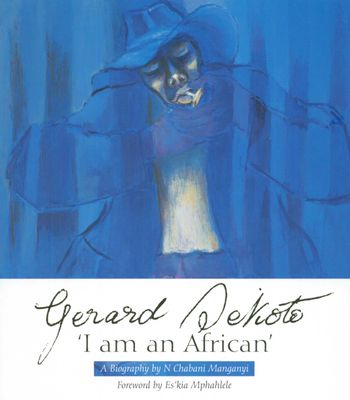
I Am An African - The Life and Times of Gerard Sekoto (Paperback, 1st ed.)
Gerard Sekoto is without doubt one of South Africa's major painters of the twentieth century. Considered increasingly as one of the earliest South African modernists and social realists, he completed his most memorable work during the early and middle years of the 1940s, first at Sophiatown (Johannesburg), then in District Six in Cape Town and later in Eastwood, Pretoria. When he left to go to Paris in 1947, he was at the height of his creative powers. Yet during the forty-five years that he spent as an exile in France, his talent, moral resilience, dedication, belief in the equality of all people and, most of all, his identity as an African sustained him during the most difficult times.
Sekoto said of his work, ""All my paintings searched to rediscover an identity common to all people of different origins, to the quest for the common relation between beings.""
The story told in this book reveals the extent to which triumphant moments in the painter's life were, at times, accompanied by heart-rending adversity. Interesting too is the richness retrospectively brought to light by the discovery, after Sekoto's death, of the painter's suitcase of treasures, which contained previously unknown musical compositions, letters and a large quantity of notes, writings and private documents.
The biography ends with a statement by Gerard Sekoto on art and the responsibility of artists, which he presented in Rome in 1959. Photographs and full color plates of previously unpublished and significant paintings are included.
Chabani Manganyi, currently a Vice Principal at the University of Pretoria, is a clinical psychologist, biographer, and non-fiction writer.
Sekoto said of his work, ""All my paintings searched to rediscover an identity common to all people of different origins, to the quest for the common relation between beings.""
The story told in this book reveals the extent to which triumphant moments in the painter's life were, at times, accompanied by heart-rending adversity. Interesting too is the richness retrospectively brought to light by the discovery, after Sekoto's death, of the painter's suitcase of treasures, which contained previously unknown musical compositions, letters and a large quantity of notes, writings and private documents.
The biography ends with a statement by Gerard Sekoto on art and the responsibility of artists, which he presented in Rome in 1959. Photographs and full color plates of previously unpublished and significant paintings are included.
Chabani Manganyi, currently a Vice Principal at the University of Pretoria, is a clinical psychologist, biographer, and non-fiction writer.
We Also Recommend





